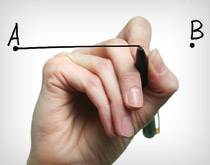Tepper Professor Anita Williams Woolley's first insight into organizational behavior came during her years on an ROTC scholarship to Harvard. She spent weekdays carrying books across the Cambridge green, weekends slogging through fields with 60 pounds of gear strapped to her back.

One particular weekend, her unit faced an obstacle course designed to test their problem-solving skills. Different unit members were given command for a time and expected to formulate a plan for completing the obstacle course. They kept failing. These were smart, experienced soldiers-in-training, but for all of their specialized intelligence, when it came time to command, they couldn't translate that to group success.
After everyone else had a chance to lead, the disheartened group, drenched from rain, decided to give the only woman in the unit, little "Harvard," a try. Instead of barking commands, Woolley began to ask questions, to sketch things out in the mud, to bounce ideas off each other. Soon, the group was gelling, and when they returned to the course, they made it through unscathed. A bunch of smart people had turned into a smarter group.
Years later, in a paper recently published in the peer-reviewed journal Science, a team of researchers led by Woolley proved in a scientific way what Woolley had learned that day in the mud. After splitting nearly 700 people into small groups, they found that the best indicator of how well a group performed on intelligence tasks was not, in fact, the intelligence of the members. It was their social sensitivity. The whole, in other words, is greater than the sum of its parts.
-Bradley A. Porter (HS'08)



